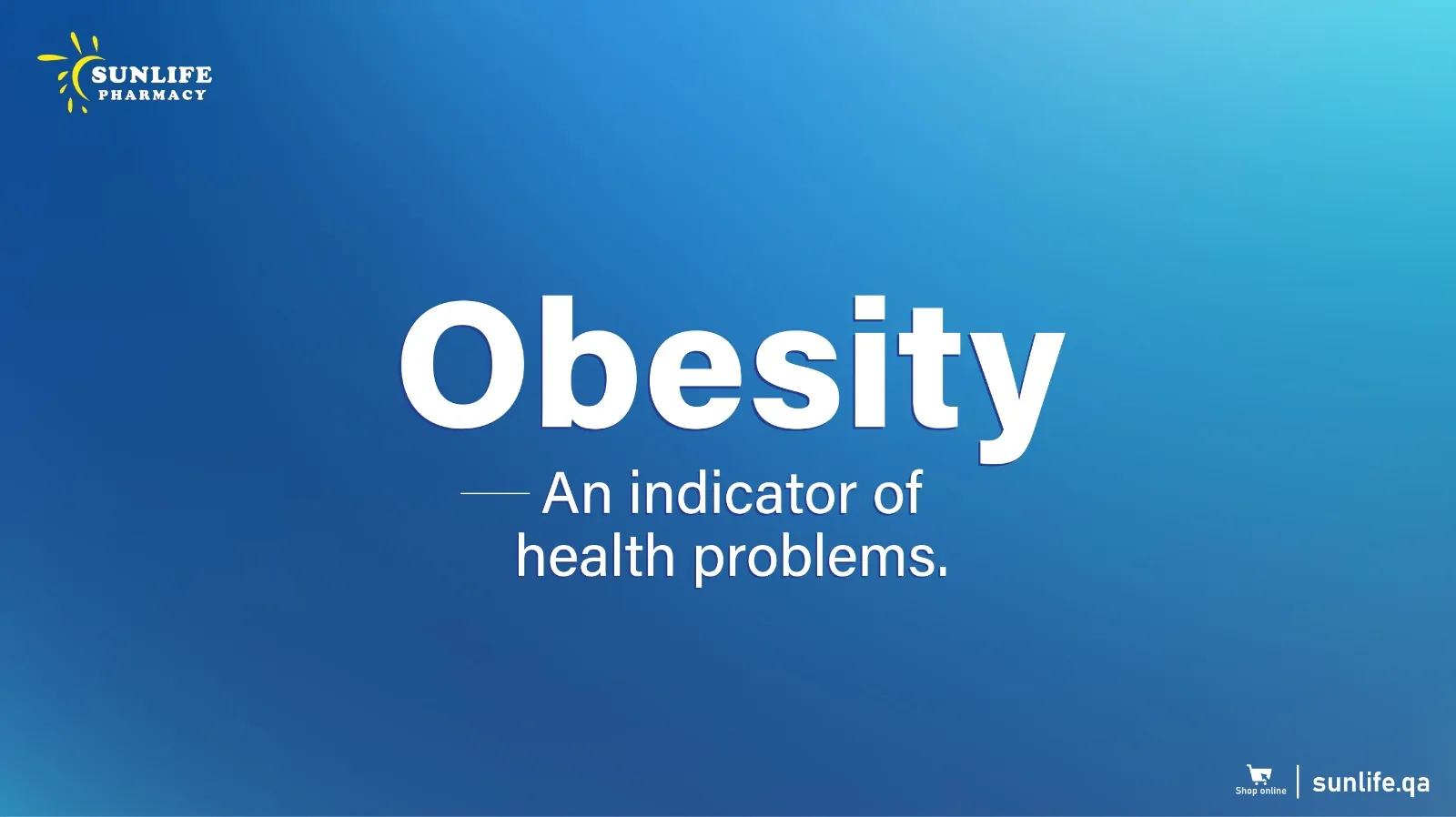Is obesity a challenge ?

Weight loss supplements are gaining popularity among obese people. The prevalence of obesity is increasing at an alarming rate in many parts of the world. About 2 billion people are overweight and one third of them obese. The plight of the most affected populations, like those in high-income countries in North America, Australasia and Europe, has been well publicized. However, the more recent increases in population obesity in low- and middle-income countries that are now increasingly being observed have been less recognized. Based on the existing prevalence and trend data and the epidemiological evidence linking obesity with a range of physical and psychosocial health conditions, it is reasonable to describe obesity as a public health crisis that severely impairs the health and quality of life of people and adds considerably to national health-care budgets. Intersectoral action to manage and prevent obesity is urgently required to reverse current trends.
Obesity a global health issue
Over the last three to four decades, overnutrition and obesity have been transformed from relatively minor public health issues that primarily affected the most affluent societies to a major threat to public health that is being increasingly seen throughout the world. The plight of the most affected populations, like those in high-income countries in North America, Australasia and Europe, has been well publicized. However, the more recent increases in population obesity in low- and middle-income countries that are now increasingly being observed have been less recognized.
Two relatively recent papers documented the global prevalence of obesity . The Global Burden of Metabolic Risk Factors of Chronic Diseases Collaborating Group analyzed data from 199 countries and territories and 9.1 million adults with respect to the prevalence of overweight and obesity between 1980 and 2008 . During that 28-year period, the prevalence of obesity nearly doubled worldwide. In 2008, about 1.5 billion adults were estimated to have a body mass index (BMI) of 25 or more (about 34%). Of these, 500 million were considered obese (about 10% in men and 14% in women).

In 2008, the highest rates of obesity in women were observed, in descending order of magnitude, in Southern Africa, North Africa and the Middle East, Central Latin America, North America (US and Canada) and Southern Latin America. In men, the top 5 regions were North America (US and Canada), Southern Latin America, Australasia, Central Europe and Central Latin America. Note that many of these regions comprise low- or middle-income countries.
More recently, the analyses for the Global Burden of Disease Study 2013 further documented that worldwide, the proportion of adults with a BMI of 25 or greater increased between 1980 and 2013 from about 29 to 37% in men and from about 30 to 38% in women. These estimates are slightly higher than those calculated by Finucane et al. It may reflect further increases between 2008 and 2013, but this may also be due to methodological differences between the two studies. In adults, the estimated prevalence of obesity exceeded 50% in men in Tonga (Polynesia) and in women in some countries in the Middle East, Polynesia and Micronesia. Since 2006, the increase in adult obesity seems to have leveled off in several high-income countries, but the incidence generally remains higher than in most low- and middle-income countries.
Weight loss supplements
In the analyses for the Global Burden of Disease Study , estimates were also made of the global prevalence of overweight and obesity in children and adolescents. Ng et al. showed that among children and adolescents in developed countries, the prevalence in 2013 was high; about 24% of boys and 23% of girls were either overweight or obese. In general, the prevalence of overweight and obesity had increased considerably since 1980. There were, however, large differences in the prevalence of obesity and secular trends. The prevalence of overweight and obesity had also increased in children and adolescents in developing countries, from about 8% in 1980 to 13% in 2013 for boys and girls.
Ng et al. estimated that in 2013, more than 2 billion people in the world were overweight or obese and about 671 million of them were obese.
About 25 years ago, obesity was considered to be particularly a problem of high-income countries. In those high-income countries, as illustrated by Molarius et al. , an inverse association was seen between obesity and socioeconomic status, particularly in women. In contrast, in low- and middle-income countries, the prevalence of obesity tended to be low and was confined to those with relatively high socioeconomic status . Monteiro et al. were among the first to show that this was no longer true in 2003 and that obesity had also become a problem of lower socioeconomic groups, particularly of women in middle-income countries. More recently, Dinsa et al. observed that by 2012, the association between socioeconomic status and obesity remained positive for both men and women in low-income countries. However, in middle-income countries, the association varied greatly in men and was generally negative in women. In children and adolescents, however, obesity remained predominantly a problem of those with relatively high socioeconomic status in low- and middle-income countries.
The epidemiology of obesity has for many years been difficult to study because many countries had their own specific criteria for the classification of different degrees of overweight. Gradually, during the 1990s, however, the BMI (weight/height2) became a universally accepted measure of the degree of overweight, and now, identical cutoff points are generally recommended. This most recent classification of overweight in adults by the World Health Organization (WHO) is given in table . In many community studies in affluent societies, this scheme has been simplified and cutoff points of 25 and 30 are used for descriptive purposes. Both the prevalence of a very low BMI (<18.5) and of a very high BMI (40 or higher) is usually low, in the order of 1-2% or less.
A WHO expert consultation acknowledged that, at a given BMI, people from Asian populations may have vastly different levels of fatness and a different fat distribution compared to Caucasian populations. This, at least in part, may result in similar health risks in Asians at lower levels of BMI than in Caucasian populations. The consultation concluded that the proportion of Asian people with a high risk of type 2 diabetes and cardiovascular disease is substantial at BMIs lower than the existing WHO cutoff point for overweight (BMI ≥25). However, available data do not necessarily indicate a clear BMI cutoff point for all Asians for overweight or obesity. The cutoff point for moderate health risk varies with a BMI of 22-25 in different Asian populations; for high risk, it varies with a BMI of 26-31. Because of the large variations in associations between BMI and health risks in Asian populations, no attempt has been made, therefore, to redefine cutoff points for each population separately.
However, the Asia Pacific Cohort Studies Collaboration has proposed that the international classification of obesity should be adapted for Asian countries . They indicated that, in Asian populations, overweight should be classified as a BMI above 23 and obesity as a BMI of 25 or higher. If such a classification was applied, the prevalence of obesity (BMI ≥25) in Japan would be substantially higher (over 20% rather than 2-3%) . The global prevalence of obesity may, therefore, be vastly underestimated because many people in Asia may be inappropriately classified by their level of BMI.
Several countries such as China have adopted their own cutoff points for the classification of BMI. Xi et al. , for example, defined obesity in China as a BMI >27.5. They analyzed data from the China Health and Nutrition Survey which was conducted from 1993 to 2009. The prevalence of obesity increased during this period from about 3 to 11% in men and from 5 to 10% in women. Similar trends were seen in all age groups and regions.
 Source: Mansia
Source: Mansia
Not only is the classification of BMI problematic because of ethnic variations in body composition, but much research over the last decade has suggested that, for an accurate classification of overweight and obesity with respect to the health risks, one needs to factor in abdominal fat distribution as well. Traditionally, this has been indicated by a relatively high waist-to-hip circumference ratio. It has been proposed that the waist circumference alone may be a better and simpler measure of the health risks associated with abdominal fatness . In 1998, the US National Institutes of Health (National Heart, Lung, and Blood Institute) adopted the BMI classification and combined this with waist cutoff points . In this classification, the combination of overweight (BMI between 25 and 30) and moderate obesity (BMI between 30 and 35) with a large waist circumference (≥102 cm in men or ≥88 cm in women) is proposed to carry additional risk. Also, these waist cutoff points may have to be ethnicity specific .
Health Consequences of Obesity
The increase in obesity worldwide has an important impact on health impairment and reduced quality of life. In particular, obesity has an important contribution to the global incidence of cardiovascular disease, type 2 diabetes mellitus, cancer, osteoarthritis, work disability and sleep apnea. Obesityhas a more pronounced impact on morbidity than on mortality. Visscher and Seidell predicted in 2001 that disability due to obesity-related cardiovascular diseases would increase particularly in industrialized countries, as patients survive cardiovascular diseases in these countries more often than in nonindustrialized countries. Disability due to obesity-related type 2 diabetes, they argued, would also increase, particularly in low- and middle-income countries, as insulin supply is usually insufficient in these countries. As a result, in these countries, an increase in disabling nephropathy, arteriosclerosis, neuropathy and retinopathy is expected. Increases in the prevalence of obesity will potentially lead to an increase in the number of years that subjects suffer from obesity-related morbidity and disability . The Global Burden of Disease Study and the WHO have recently documented that obesity is indeed a major contributor to ill-health, disability and mortality in many regions of the world .
Prevention of Obesity
Adequate management of obesity as a chronic condition for those who are already obese is important and requires the principles of integrated care for disease management . An example of a national approach towards the management of obesity is the integrated health-care standard for obesity in the Netherlands. This standard involves strategies for early detection, diagnosis and treatment of obesity. Following the principles of stepped care, the preferred treatment is a combined lifestyle intervention and, when appropriate, additional medical therapies such as medication and bariatric surgery can be applied.Combined lifestyle interventions target physical activity as well as diet and include psychological techniques such as motivational interviewing and cognitive behavioral therapy. The intervention phase, with a focus on behavior change and weight loss, is followed by a phase of relapse prevention and, if necessary, long-term behavioral and weight maintenance support. Implementation of such a standard transcends traditional boundaries of conventional health-care systems and health-care professions but, instead, focuses on competences of groups of health professionals who organize care from a patient-oriented perspective .
From a public health perspective, a sustainable approach towards effective prevention is a more affordable strategy. In order to adequately prevent obesity, the upstream causal factors need first to be identified. Swinburn et al. have pointed out that the simultaneous increases in obesity in almost all countries seem to be driven mainly by changes in the global food supply, which is offering more processed, affordable and effectively marketed food than ever before. Energy-dense palatable foods lead to overconsumption which, in turn, contributes to weight gain and obesity. Factors in the global food system combined with local environmental factors result in large differences in obesity prevalence between populations. Individuals respond to local environmental factors like sociocultural and economic factors and the physical environment (fig). Glass and McAtee constructed a multilevel model that is useful for addressing the complex, interacting contexts for obesity prevention. This integrates biological and socio environmental (economics, culture, social networks and features of the physical environment) influences on behaviors such as eating and physical activity .
The purchase and consumption of foods are influenced by many factors such as price, palatability and habits shaped by culture and ethnicity. These factors interact not only linearly but influence each other in many different ways. The multilevel model views obesity as a result of individuals who interact with each other and with environmental factors as organisms in an ecosystem. Such a systems approach illustrates that a single cause of the obesity epidemic is unlikely. It also suggests that the occurrence of obesity in an individual or in populations is a result of combinations of factors at multiple levels of influence . How many people become obese is usually a consequence of environmental factors; who becomes obese is usually more strongly related to biological (i.e. genetic) factors. This lack of one single causal factor also implies that single interventions are unlikely to have more than only a small overall impact on their own. A systemic, sustained portfolio of initiatives, delivered at scale, is needed to address obesity prevention. Interventions are needed that rely less on education and personal responsibility of individuals but more on changes to the environment and societal norms. Such interventions ‘reset the defaults’ to make healthy behaviors easier. In a recent report of the McKinsey Global Institute , it was suggested that such interventions should include reducing default portion sizes, changing marketing practices and restructuring urban and educational environments to facilitate physical activity. In the report, it was argued that ‘no individual sectors in society, whether they are governments, retailers, consumer-goods companies, restaurants, employers, media organizations, educators, health-care providers, or individuals, can address obesity on their own’.
Role of governments
A combination of top-down corporate and government interventions with bottom-up community-led ones is most likely to be successful. One of the existing integrated approaches which combine top-down and bottom-up community activities is the EPODE initiative . EPODE (Ensemble Prévenons l’Obésité Des Enfants or Together Let’s Prevent Childhood Obesity) is a large-scale, centrally coordinated, capacity-building approach for communities to implement effective and sustainable strategies to prevent childhood obesity. Since 2004, EPODE has been implemented in over 500 communities in 6 countries. This approach is based on four pillars [22]:
- Political commitment: gaining formal political commitment at central and local levels from the leaders of the key organization(s), which influence national, federal or state policies as well as local policies, environments and childhood settings;
- Resources: securing sufficient resources to fund central support services and evaluation, as well as contributions from local organizations to fund local implementation;
- Support services: planning, coordinating and providing the social marketing, communication and support services for community practitioners and leaders;
- Evidence: using evidence from a wide variety of sources to inform the delivery of EPODE and to evaluate process, impact and outcomes of the EPODE program.
Many countries are now adopting this approach. In each country, EPODE combines a top-down and a bottom-up approach. EPODE methodology promotes the involvement of multiple stakeholders coordinated at the national level (e.g. with endorsement from ministries and support from health groups, nongovernmental organizations and private partners), and the program benefits from a scientific advisory committee (a group of specialists and academics from different disciplines) . Its core, however, is a local approach targeting families and schools in neighborhoods. Van Koperen et al.described the methodology in the form of a concise logic model covering four critical components: political commitment, public and private partnerships, social marketing and evaluation. Such a logic model suggests a series of activities and inputs that follow a linear causal path, but this is not the case. There are many feedback loops in the different stages of the model. The EPODE logic model presented here can be used as a reference for future and follow-up research; to support future implementation of EPODE in communities; as a tool in the engagement of stakeholders and to guide the construction of a locally tailored evaluation plan.
Conclusion:
Over one third of U.S. adults have obesity. Obesity is associated with a range of comorbidities, including diabetes, cardiovascular disease, obstructive sleep apnea, and cancer; however, modest weight loss in the 5%–10% range, and above, can significantly improve health‐related outcomes. Many individuals struggle to maintain weight loss, although strategies such as realistic goal‐setting and increased consultation frequency can greatly improve the success of weight‐management programs. Nurse practitioners have key roles in establishing weight‐loss targets, providing motivation and support, and implementing weight‐loss programs.
Reference:
- https://www.a-mansia.com/obesity-and-diabetes-in-the-world/
- https://www.ncbi.nlm.nih.gov/pmc/articles/PMC6088226/#:~:text=Conclusions,significantly%20improve%20health%E2%80%90related%20outcomes.
- https://www.karger.com/article/fulltext/375143#:~:text=The%20increase%20in%20obesity%20worldwide,work%20disability%20and%20sleep%20apnea.


